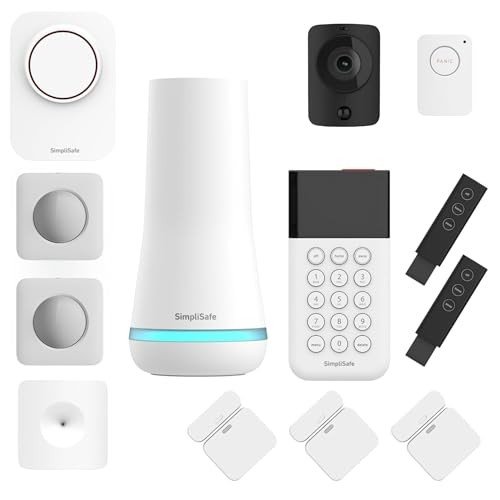Interior Lighting in the UK: A Comprehensive Guide
Interior lighting plays a crucial function in developing an atmosphere, boosting performance, and expressing personal design within homes and services. In the UK, where the weather condition can be unpredictable, reliable lighting is not only about visual appeals however likewise about making spaces feel warm, inviting, and practical. This short article explores numerous elements of interior lighting, encompassing types, patterns, ideas, and regularly asked questions.
Understanding the Importance of Interior Lighting
Lighting is typically considered the backbone of interior design. It affects mood, functionality, and the perceived size of areas. The right lighting can:
- Enhance the architectural features of a room.
- Emphasize art work and design.
- Enhance safety and security.
- Impact efficiency in work areas.
- Develop a comfy ambiance for relaxation.
Kinds Of Interior Lighting
Efficient lighting style normally incorporates 3 main kinds of lighting: ambient, task, and accent.
1. Ambient Lighting
This is the primary source of light in a room, offering total lighting. Common sources include:
- Ceiling-mounted fixtures
- Chandeliers
- Recessed lighting
- Soft wall sconces
Ambient lighting develops a foundation from which other lighting types can develop upon.
2. Job Lighting
Job lighting concentrates on specific locations to help with activities such as reading, cooking, or working. This type of lighting assists to lower eye stress and can significantly impact performance. Typical sources consist of:
- Desk lamps
- Under-cabinet lights in kitchens
- Checking out lamps next to beds
- Mounted lights targeted at work surface areas
3. Accent Lighting
Accent lighting includes drama and highlights particular things or locations, such as art work or architectural functions. This type of lighting can produce visual interest and depth in a space. Sources consist of:
- Picture lights
- Decorative lamps
- Uplighters
- LED strip lights along racks
Making use of a combination of these lighting types can result in a well-balanced and multifunctional area.
Popular Lighting Trends in the UK
The interior lighting landscape in the UK continues to evolve, affected by design patterns, technology, and consumer preferences. Here are some popular patterns to watch:
- Smart Lighting: The introduction of smart technology has transformed how people handle lighting in their homes. Smart bulbs and systems like Philips Hue enable users to manage brightness and color temperature by means of their mobile phones.
- Minimalist Designs: Sleek, easy designs that mix effortlessly with interiors are dominating the marketplace. visit this website link with fragile frames, LED strips, and geometric shapes are especially trendy.
- Industrial Lighting: This pattern showcases raw, revealed products. Metal fixtures and Edison bulbs provide a vintage touch that is both elegant and functional.
- Eco-Friendly Options: With increasing awareness of sustainability, many customers are turning to energy-efficient LED options and fixtures made from sustainable materials.
Tips for Effective Interior Lighting Design
Designing an efficient lighting strategy needs thoughtful consideration of different factors. Here are some tips:
- Consider the Purpose of Each Room: Every area has a different function. Consider what activities will take location and what kind of lighting will support those activities.
- Layer Lighting: Employ multiple kinds of lighting within a room to develop depth and versatility. Combine ambient, task, and accent lighting to boost both looks and functionality.
- Use Dimmers: Dimmers allow for control over brightness levels, enabling users to adjust lighting according to mood and time of day.
- Incorporate Natural Light: Make the many of natural source of lights like windows. Usage light, reflective colors for walls and furnishings to maximize brightness.
- Consider Color Temperature: Different color temperature levels (determined in Kelvins) create different environments. Warmer temperatures (around 2700K-3000K) are relaxing, while cooler temperatures (4000K+) lend a more medical or energetic feel.
Interior Lighting Mistakes to Avoid
To produce a well-lit area, it's vital to avoid common lighting risks. Here are some errors to enjoy for:
- Underestimating Wattage: Insufficient wattage can cause dim, unwelcoming areas.
- Overlooking Scale: Fixtures that are too little for a room can keep an eye out of location, while oversized fixtures can overwhelm an area.
- Over-reliance on Ceiling Lights: Relying exclusively on overhead lighting can develop uninviting shadows; balance with extra lighting types.
- Poor Placement: Misplaced lights can produce areas that are too intense or too dark. Plan positionings thoughtfully.
Frequently asked question Section
1. What is the distinction in between warm white and cool white light?
Warm white light (2700K to 3000K) produces a cozy, inviting environment, best for living rooms and bedrooms, while cool white light (4000K to 5000K) is more fit for workspaces as it improves concentration and clearness.
2. How can I optimize natural light in my home?
To optimize natural light, use light-colored walls, strategically location mirrors to reflect light, and go with sheer window coverings that enable sunshine to travel through.
3. How do I choose the ideal light?
Consider the size of your space, the design of your decor, and the function of the area. Make sure the scale of fixtures complements the room and matches the total aesthetic.
4. Are LED lights much better than traditional bulbs?
Yes, LED lights are more energy-efficient, have a longer life expectancy, and can supply a variety of color temperatures, making them a more sustainable lighting choice.
5. What should I do if specific areas of my room stay too dark?
Consider adding additional job or accent lighting to lighten up those locations. Floor lamps, wall sconces, and even tactically placed table lamps can assist alleviate dark areas.
Interior lighting is a necessary element of home and service design across the UK. Comprehending the various types, current patterns, and finest practices can assist homeowner in producing spaces that are not just trendy but likewise functional. With thoughtful consideration and preparation, reliable lighting can transform any environment, improving both atmosphere and use for years to come.

